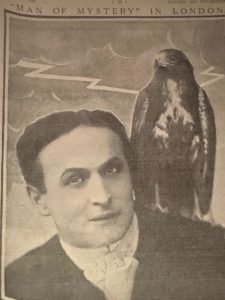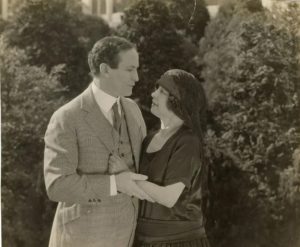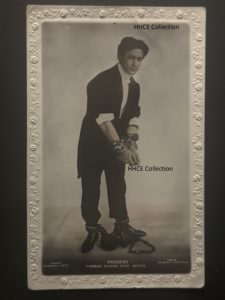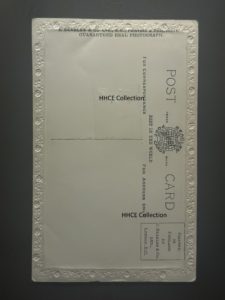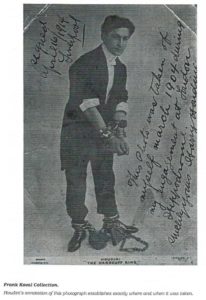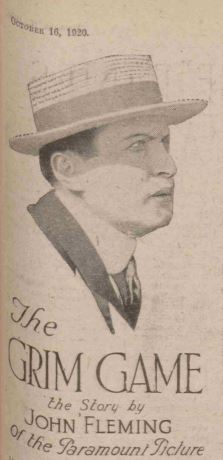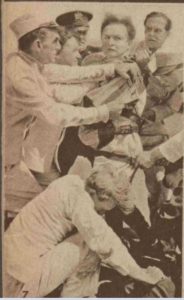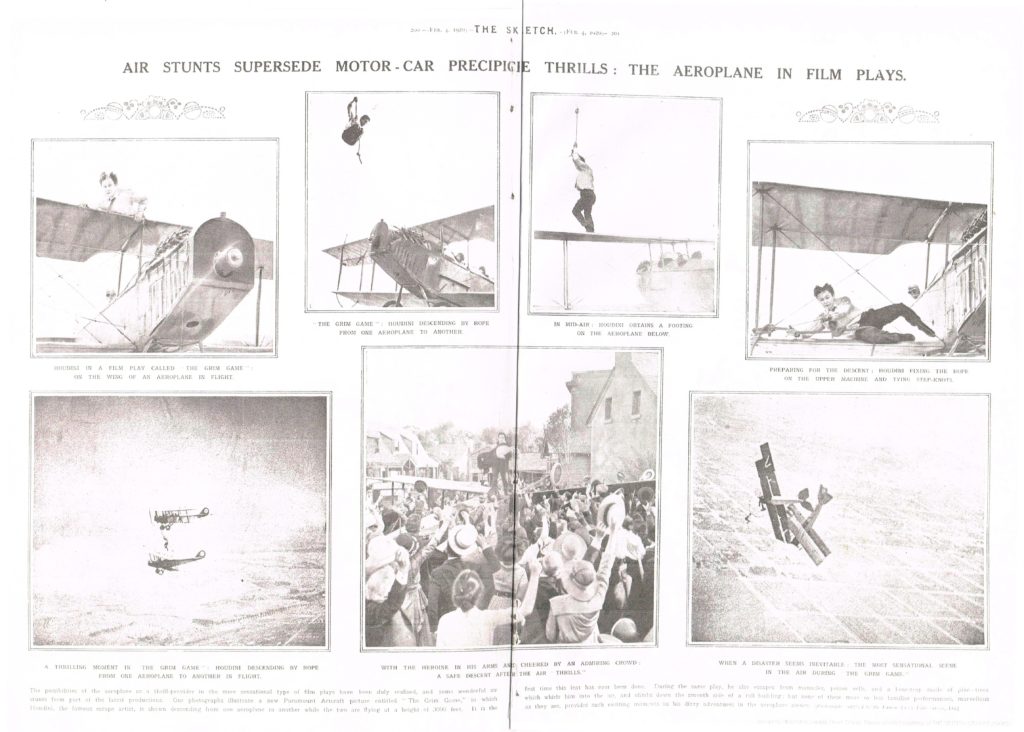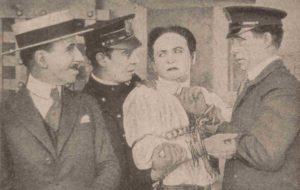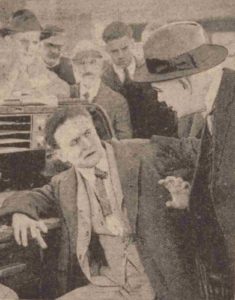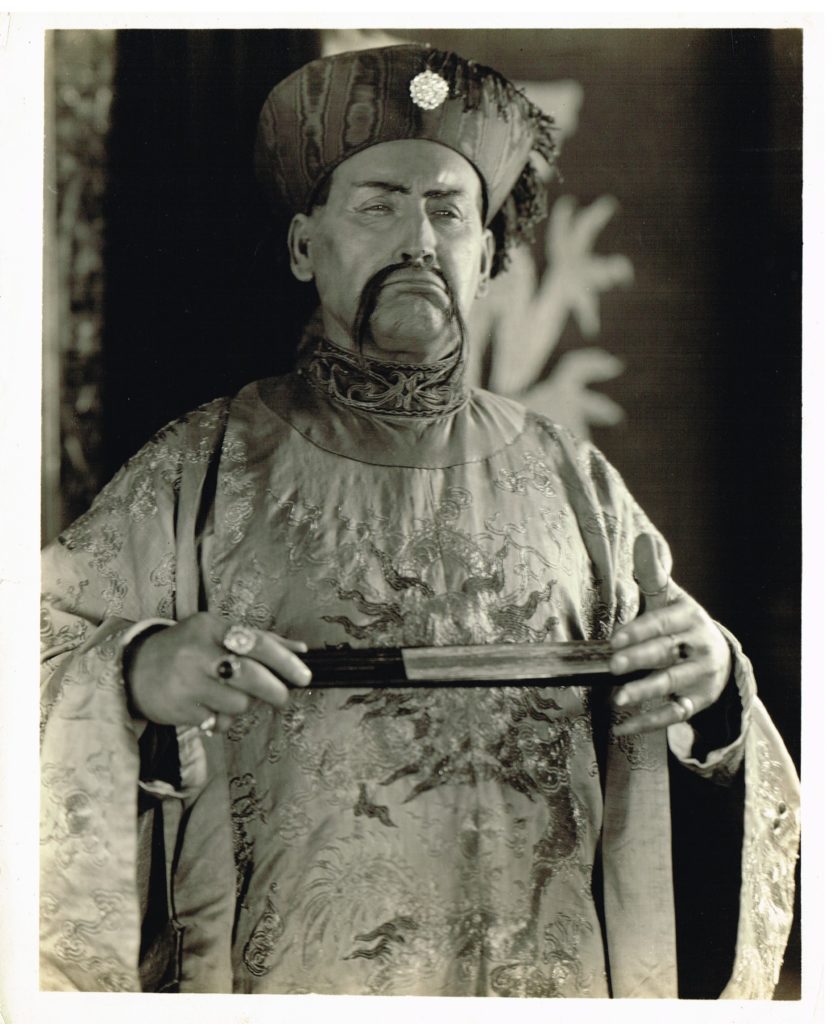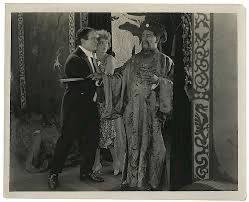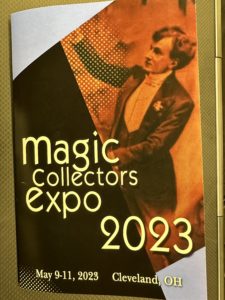
Tuesday May 9, 2023
Midnight – Arrived “safely”(?) at Cleveland Marriott East for the Magic Collectors Expo (MCE) 2023 after surviving “Spirit” airlines and a “sketchy” taxi ride from Cleveland Airport.


10am–1pm Arrived safely at Rock and Roll Hall of Fame after a pleasant Uber ride. Spent about 3 hours there, going back in time with the legends and history of Rock and Roll.

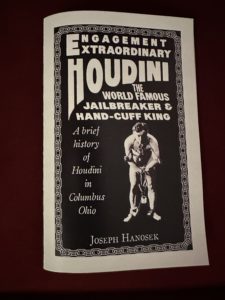
2pm–4pm Entered the Dealer Room at the MCE and made the rounds. Houdini Nuts, Arthur Moses, Ken Trombly, Joe Hanosek and Roger Dreyer had dealer tables.
- Started at the mighty Arthur Moses table, where I bought an engraved matted Houdini frame (but the frame was too large to fit in my travel suitcase, lol).
- Next was Ken Trombly’s table, where I bought a beautiful postcard, which I plan to do a future blog about.
- Followed by Joe Hanosek’s table, where I picked up his updated notes on Houdini in Columbus Ohio.
- Then visited with Roger Dreyer about the latest happenings on the Master Mystery project that I helped him research the previous year. Roger graciously gave me some Houdini Beer labels.
4pm–5pm Attended Session #1 where Bruce Averbook, Tim LaGanke, and Lance Rich gave us an overview of what to expect in Cleveland during the MCE.
5pm–6pm Had dinner with John Cox, Scott Wells and another gentlemen at Juicy Seafood. Had a shrimp basket with a Yuengling Beer in honor of my Grandpop in PA; that was his beer of choice.
7pm–8:30pm Attended Session #2.
- Jim Hagy provided a visually rich overview of the lives and works of early 20 Century Cleveland magicians.
- Sandy Daily provided the adventures and challenges of a magic collector’s wife.
- Steve Allan interviewed Gene Anderson, who is known for his marketed version of the Torn and Restored Newspaper, which was a staple of my magic shows when I used to perform. What a treat!
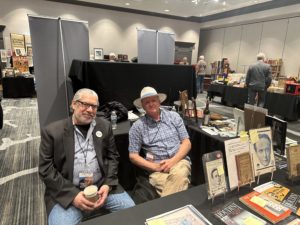
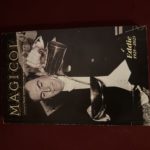
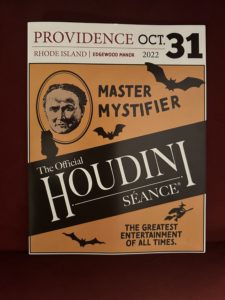
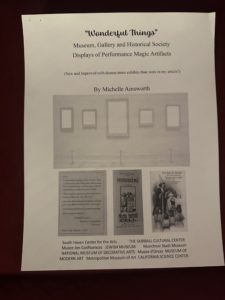
8:30pm Entered the dealer room and picked up the following items:
- Magicana Magazine with The Escapists articles by Michael Claxton and Gary Hunt (with illustrated items from Fred Pittella’s collection). [Julie Eng Magicana booth]
- Signed copy of program from The Official Houdini Séance in Providence Rhode Island [Arthur Moses booth]
- List of Museum, Gallery and Historical Society Displays of Performance Magic Artifacts from Michelle Ainsworth [Joe Hanosek booth]
- Houdini The Hull Palace Water Torture Poster [Ken Trombly booth]
- Thurston The Great Magician Poster [Ken Trombly booth]
- Horace Goldin Hippodrome Poster [Ken Trombly booth]
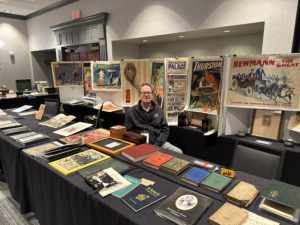
Clarification, the last 3 items I picked up off the floor after they fell down. Let me explain. I had just finished chatting with Charles Greene, and walked over to Ken Trombly’s booth, where Ken asked if I would take pictures of him sitting at his booth and send them to him later. While I was taking the pictures, Charles Greene walks over and asks if I would like to be in a picture with Ken. I walked around Ken’s table and sat in a chair next to him. Charles told us to move closer and the rest is history. Was I now the owner of a very rare poster collection? I was so embarrassed and felt terrible. Luckily, the posters survived unscathed. Charles then took a picture of Ken and I.
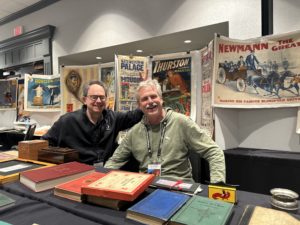
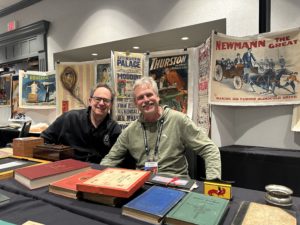
Wednesday May 10, 2023
10am–11am Watched the Thurston/Dante Tribute video.
11:30am–3:30pm
Rode on the bus with Rick Strange (a book collector) who I got to know at the last two MCE’s
Arrived at a Recreation Center near Bruce Averbook’s home, where we had Panera sandwiches, chips & water and great conversation. Met a nice couple (don’t recall their names unfortunately), that shared a photograph of a letter in their collection about Houdini in San Francisco which included Houdini performing at San Quentin and his Thanksgiving dinner with Jack and Charmian London.

Entered Dr. Bruce Averbooks museum, which he and his wife call home. Everywhere you looked, there was magical treasures, which included so much Houdiniana. Each area had experts (e.g., Gabe Fajuri, Fred Pittella, Roger Dreyer, John Cox, Bill Kalush, Mike Caveney, Lupe Nielson, Jim Rawlins and others) describing some of what we were seeing. I was completely overwhelmed. It was the most amazing and beautiful place you could imagine. Bravo to Bruce and his wife for creating and sharing this paradise.
Rode on the bus with Joe and Lisa Patire, who I first met in Scranton PA in 2015.
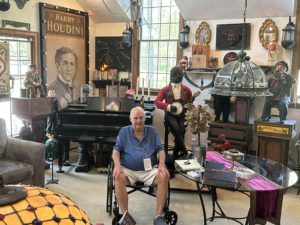

Entered the beautiful home of Tim LaGanke, which was a museum of Automata. The tour included automata in his home, garage and ended with a magic show outside on the deck. There was even some Houdini related items.
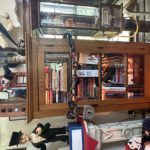


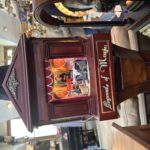
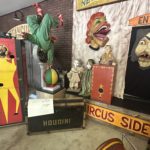
5:30-6:30 While others went to dinner, I hung out with John Cox and discussed my next book, Houdini’s SchoolDays (to be released sometime in 2023) as well the books John is working on.
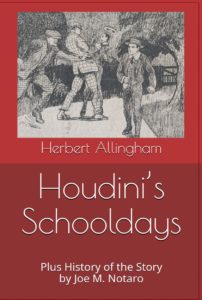
7pm–8:30pm Attended Session#3
- Richard Cohn entertained us with his accordion and told the sensational tale of a mystery man named Henry Roltair, a former assistant to Alexander Herrman, magic performer, inventor, vaudeville star, dealer, deal maker, circus star, patent holder, celebrity, businessman and more.
- Phil Schwartz shared the funny business of magic collecting and suggested ways to insure that your collection does not pass into underserving or unwanted hands.
- Al Belmont with Bill Smith shared memories of the Blackstone Sr. Show.

8:30-? Went to hotel bar area (that also served Yuengling Beer), had dinner with John Cox, and then we were joined by other Houdini nuts (Gary Hunt, Arthur Moses, Fred Pittella, and Joe Hanosek).
Thursday May 11, 2023
11am–12:30pm Attended Session #4.
- William Winters presented Walter Gibson, The Man Who Knew Them All, which included Houdini.
- John Cox presented Houdini in Cleveland. He took us on a fun, well researched, fact-filled tour, where we find out how well Cleveland stacks up against other cities where Houdini performed.
- David Charvet looked at cars used by magicians of the past, which included Houdini.

12:30 Went to Dealer room and picked up a signed copy of David Charvet’s Conjurers & Their Cars An Album of Motoring Magic. Also got Lance Burton to sign the page on his Vanishing Corvette.
2:30-4pm Attended Session#5 at the MCE.
- Jay Hunter gave a presentation on Magicians Throw-Out cards, where he shared images of many cards from his impressive collection.
- Gabe Fajuri of Potter & Potters Auctions gave a presentation on A Half Century Of Magic On The Block. This included auctioning off two items at the end. One of the items was a Houdini signed SAM card.
- Mike Caveney closed the last session with a presentation on The Otis Litho Company located in Cleveland. Using a file of 140 letters that passed between Charles Carter and Otis Litho, Mike chronicled the creation of a full line of posters that were produced in 1926. The Houdini Egyptian Buried Alive poster was done by The Otis Litho Company.
6:30pm-9:30pm Attended “Cleveland’s Finest Magicians Dinner & Show which was very entertaining. Sat at a table with Michelle Ainsworth, John Cox, Joe Hanosek, Jay Hunter, Rick Strange and others.
9:30-? Went to bar area at hotel and hung out with John Cox, Joe Hanosek, Gary Hunt, Fred Pittella and Rick Strange. And of course our (Joe Hanosek, Rick Strange and I) beer of choice that night was Yuengling.
Thank you to Bill Smith and all his helpers for putting on an amazing Expo.
And thanks to all the people highlighted in bold above that trully made this a wonderful experience.
Related:

